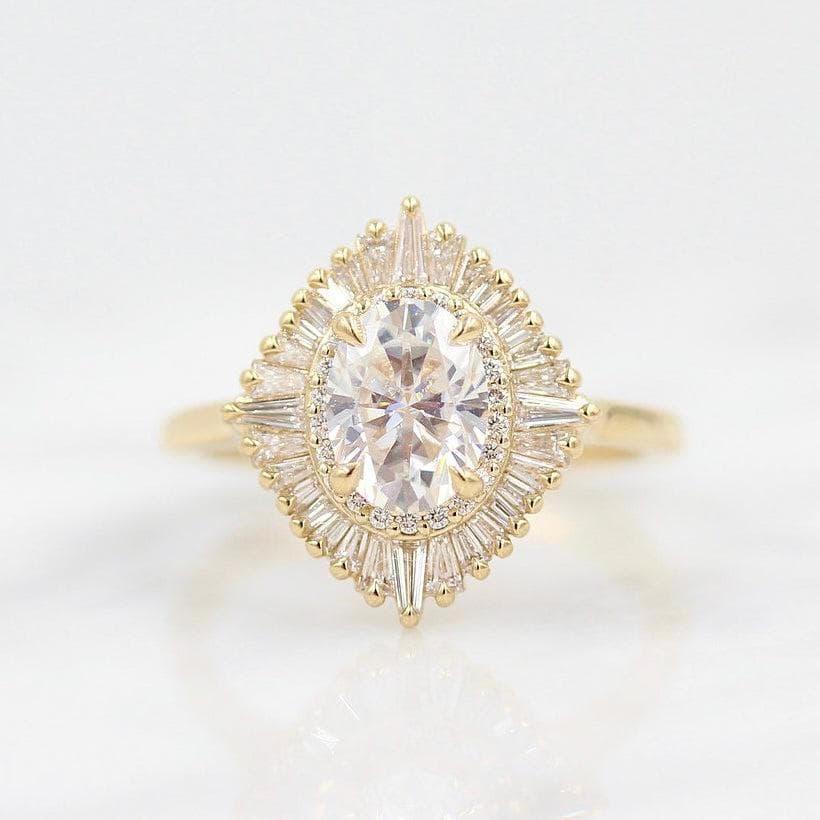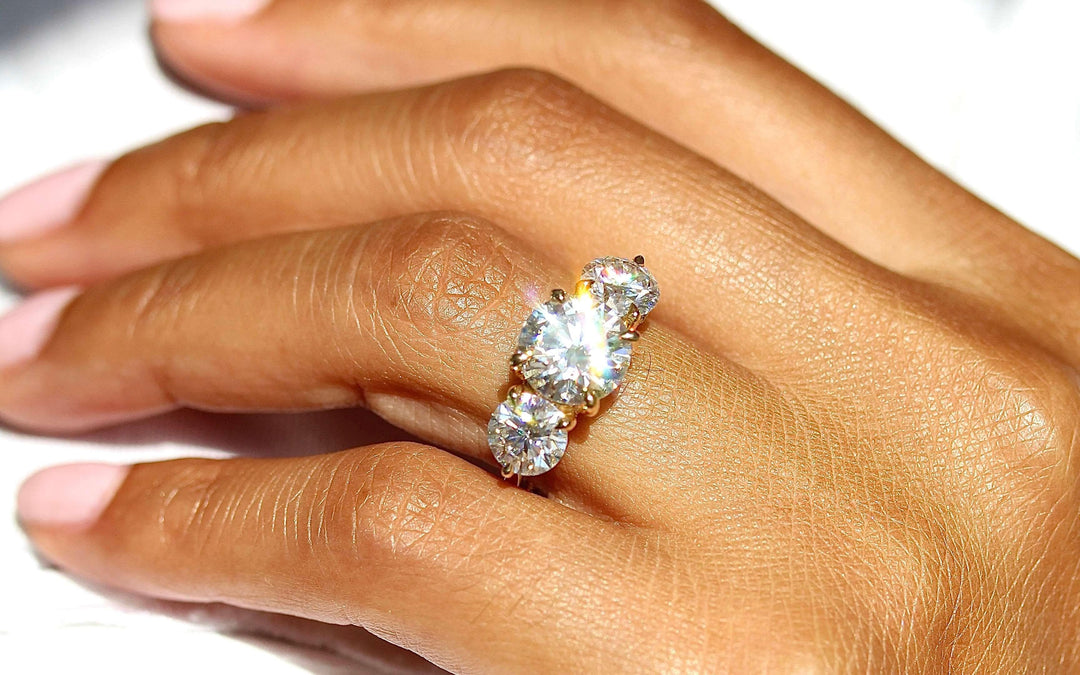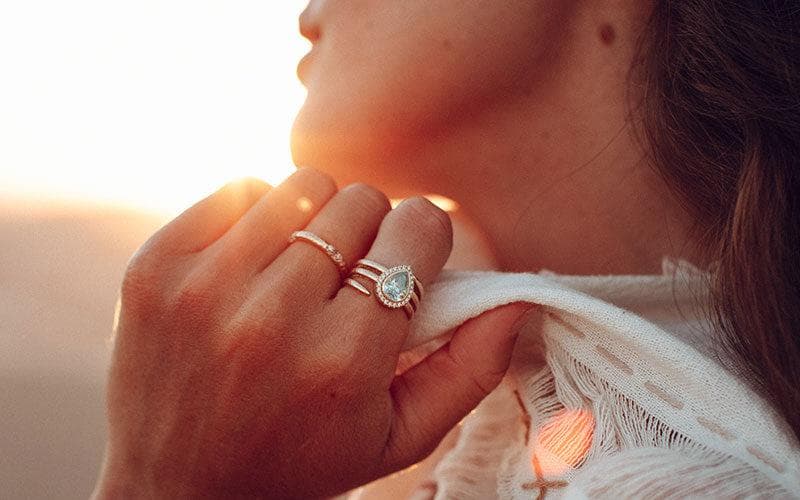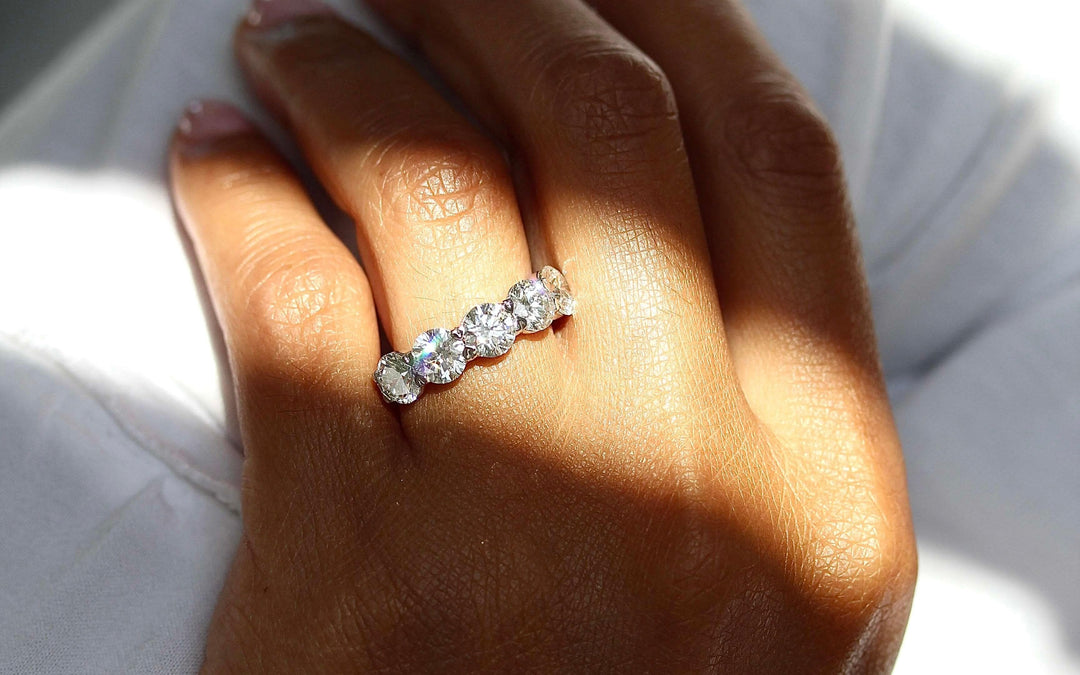
Popping the question means a ring! And picking a ring can mean, well, more questions. Not the least of which being, Which gemstone is right for me? Diamonds certainly deserve their default status, but have you heard of moissanite? In case you haven’t, moissanite is a lab-grown gemstone that has a lot in common with diamonds and is our favorite alternative for those who want the look and longevity of a diamond but at a much lower price.
Before you dismiss moissanite out of hand, let us help you weigh what sparkle is right for your hand. Below we’ve laid out some key similarities and differences between moissanite and diamonds to help you pin down this essential part of your perfect ring.

Moissanite Origins
In 1893, the French chemist Henri Moissan found tiny crystals in a meteor crater in Arizona. He initially mistook the stunning stardust for diamonds, but eventually identified it as the mineral silicon carbide. Naturally occurring moissanite is incredibly rare, so today, moissanite is created in labs as a diamond simulant and is an increasingly popular choice for fine jewelry.
While there are notable differences between moissanite and diamonds, one great thing they’ve got in common is their ability to be ethically sourced. Lab-grown diamonds and moissanite are both gorgeous stones, and they’re much easier on the earth than traditional mined diamonds.
Hardness and Durability: A Moissanite vs. Diamond Comparison
Gemstones are measured on Moh’s scale, which assesses a gem’s hardness based on its ability to withstand scratching. There’s no beating a diamond’s perfect 10 rating, but moissanite’s solid 9.25 score means it is the second-hardest gemstone and suitable for daily wear. While there is a measurable hardness difference between moissanite and diamonds, both are durable treasures you can trust to maintain their sparkle for generations.
The 4 Cs of Diamonds
Diamonds are graded according to the 4 Cs: color, cut, clarity, and carat. Moissanite ratings aren’t standardized like diamonds’, but for the sake of a moissanite vs. diamond comparison, we’ll describe both moissanite and diamonds in terms of the famous 4 Cs.
Color
Truly colorless diamonds are quite rare. Most of the ones used in jewelry contain tints of yellow or brown so slight that they’re invisible to the untrained eye. On the GIA scale, diamonds with the least color receive the highest grades. Similarly, the highest grade that moissanite can receive is “colorless,” which is the only type of moissanite sold at Taylor Custom Rings.
Cut
A diamond’s cut refers not only to its shape, but to how well it interacts with light. The best-cut diamonds will both reflect white light and scatter it into all colors of the rainbow. A masterful cut and polish likewise affects moissanite’s brilliant appearance. (More on the difference between moissanite and diamond brilliance later).
Clarity
During formation, diamonds typically develop internal microscopic abnormalities called inclusions that can sometimes only be spotted by a trained diamond grader. The size, position, and visibility of inclusions impact a diamond’s clarity. Moissanite also contains tiny inclusions, though it is known for having naturally high clarity.
Carat
Carat is a unit of measurement used to describe a diamond’s weight. Typically, the higher the carat, the larger the diamond, though a poor cut can make a diamond appear smaller than the carat weight would suggest. Ring shoppers will discover a difference between moissanite and diamond sizing measurements, as moissanite’s size is typically reported in millimeters, though its diamond-equivalent carat weight may also be used.
Brilliance
Moissanite closely resembles diamonds in color and durability, but it is still a unique gemstone with its own chemical, physical, and optical properties. Perhaps the most visible difference in a moissanite vs. diamond comparison is the stones’ brilliance.
Brilliance refers to the visual effect created by a diamond’s ability to reflect white light. Moissanite exhibits a heightened brilliance and color flash, due to its different facet pattern as well as its high refractive index. Some love the fiery flashes moissanite emits, while others disparage its colorful sparkle as an unwanted “disco ball effect.” Really, it comes down to personal preference.
Cost
Without a doubt, the most practical difference between moissanite and diamonds is the price tag. For a comparably-sized stone, moissanite is dramatically less expensive than a diamond, making it a great choice for budget-conscious shoppers. If you want the aesthetic of a diamond for a fraction of the cost, moissanite is a great value.
After considering both diamonds and moissanite, if it’s a diamond you want, opt for our lab-grown diamonds, which allow you to get a bigger, nicer diamond for the same price you would spend on a mined diamond. Besides being a better choice for your wallet, it’s a better choice for our planet and the people on it.
Still unsure after this moissanite vs. diamond comparison? Check out our lab-grown diamond and moissanite engagement ring collections. You can also book a consultation with one of our design experts, who can further discuss the differences between moissanite and diamonds and help you pick the right stone for your story. Let’s make your dream ring!













